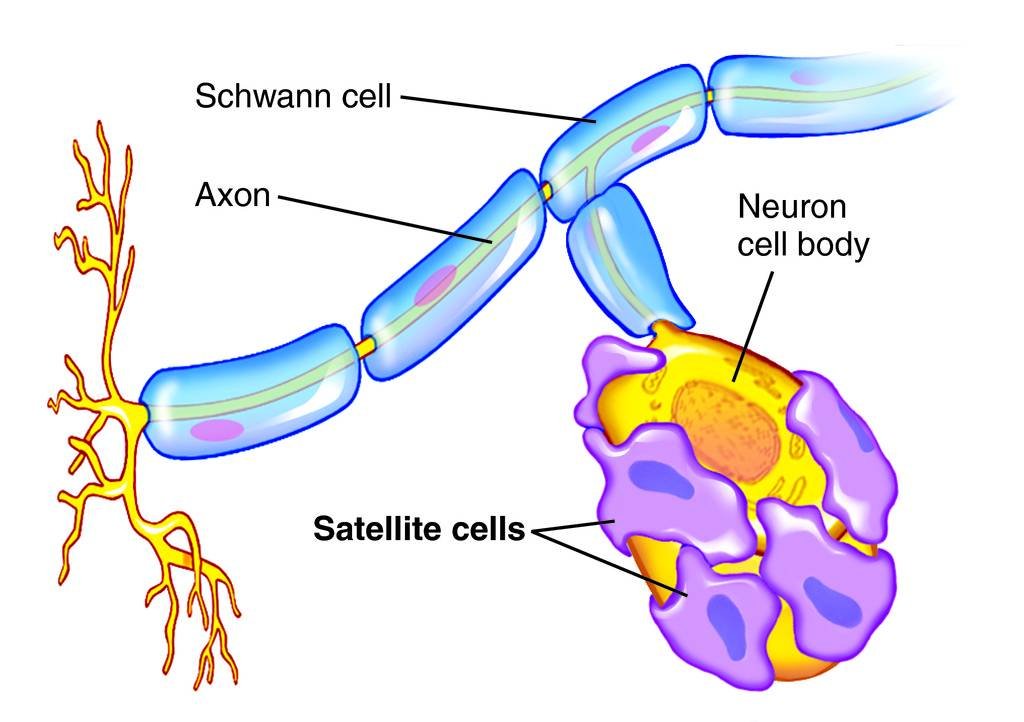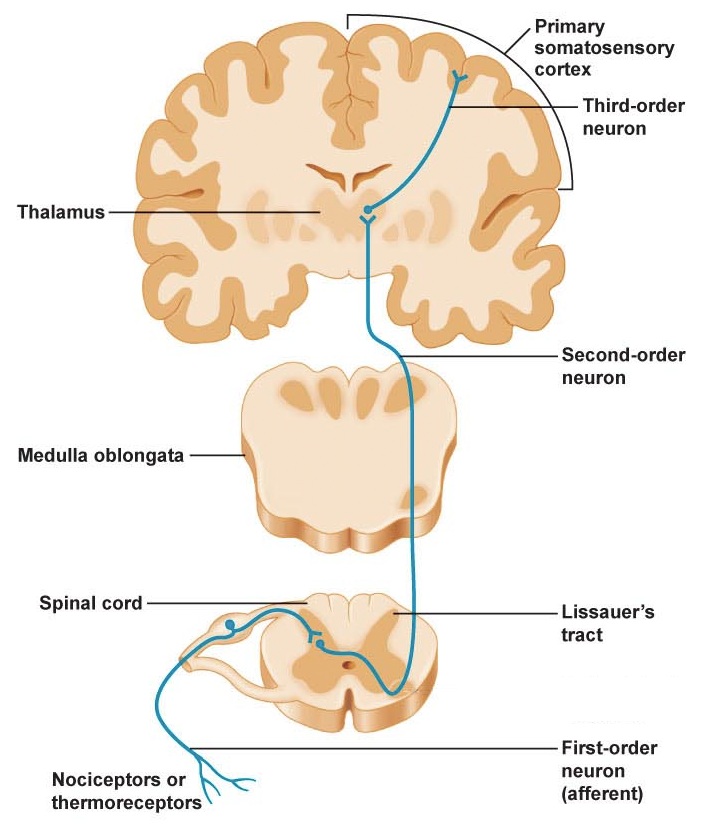The skin is able to detect pain through specialized receptors called nociceptors. These nociceptors are expressed on free nerve endings, which are somatic sensory nerve cells that are close to the skin surface. In everyday life, these neurons are responsible for telling the brain that the body is being injured. Pain is a protective mechanism that will encourage the body to withdraw or avoid some exogenous injurious stimulus.
Somatosensory information is sent into the central nervous system via different types of afferent projections. Crude touch information is sent into the brain by the dorsal-column medial-lemniscus pathway, but pain and temperature information arrives into the central nervous system via the anterolateral pathway.
While the A delta fibers and C fibers both utilize glutamate as the neurotransmitter to send information to the secondary neuron, there are some major differences between the A delta and C fibers.
Axons and myelination
Myelin is the insulation that wraps around axons and increases the speed by which action potentials are sent down an axon. A delta fibers are myelinated whereas C fibers are unmyelinated. Because of these anatomical features, painful stimuli from A delta fibers arrive in the central nervous system before those same painful stimuli from the C fibers arrive. The A delta fibers therefore send the “first pain” into the brain, while the C fibers send the slower pain. The first pain is often described as a more shallow, sharper pain. C fiber pain is often described as a throbbing pain.
There are also physical differences in the diameters of the axons. A delta fibers have larger diameter axons, up to 5 uM in diameter. C fibers, however, are smaller, and may be up to 1 uM in diameter. This difference in axonal diameter also contributes to the difference in which signals are propagated. An action potential from a C fiber will fire faster than one from an A delta fiber.
Although A delta fibers are faster at sending signals compared to C fibers, it should be noted that they are still slower than A beta or A alpha fibers, which may send signals twice, or even ten times faster than A delta fibers. These A beta or A alpha fibers carry information related to proprioception.
Anatomy of projections
The neurons with the free nerve endings that detect pain stimuli at the skin are the first neurons responsible for pain sensation. These neurons have their cell bodies located in the dorsal root ganglion, a bundle of cell bodies that are on the dorsal side of the spinal cord. These neurons send axonal projections to the secondary neurons, which have their cell bodies in the gray matter-rich center area of the spinal cord.
The location of this synapse differs between the A delta and the C fibers. The primary neuron that sends A delta fibers into the dorsal horn of the spinal cord project into secondary neurons which have their cell bodies in Rexed layers I and V. On the other hand, the primary neurons that send C fibers to the spinal cord project into Rexed layers I and II.
C fibers are considered to be “polymodal,” since they carry different classes of information, including temperature, mechanical pressure, and chemical pain. Dysregulation in A delta fiber or C fibers may result in hyperalgesia, a condition where innocuous stimuli result in pain.
The axons of C fibers often clump together in groups called Remak bundles.









